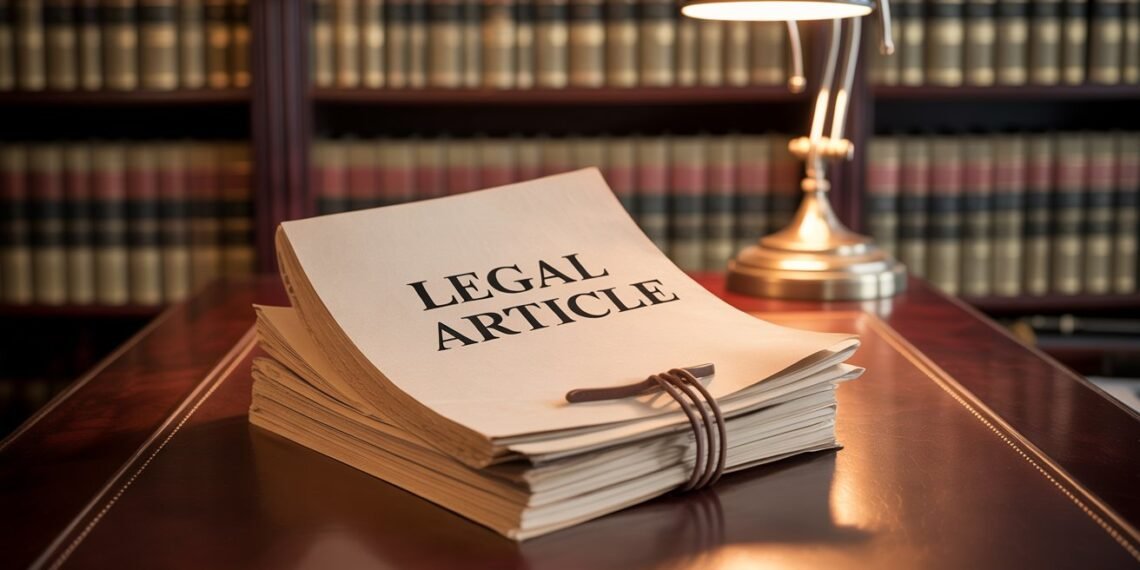Author: Arshemah Ahmad student of BA.LLB 2nd Year at Jamia Millia Islamia.
Introduction:
Imagine you’re building a house. You carefully lay a robust foundation. Over time, unnoticed cracks begin to form. Not from sudden shocks but because small supports shifted, or dampness crept in. Constitutional backsliding follows this pattern: it’s the gradual weakening of democratic institutions and norms inside an elected legal framework. It doesn’t feel like a coup or revolution, but rather an unfortunate, almost invisible erosion of checks and balances.
In this article, we explore how constitutional backsliding has manifested in four democracies: the United States during the Trump presidency, Hungary under Viktor Orbán, Poland under Law and Justice (PiS), and India in recent years. We’ll keep things factual, sourced, and approachable—offering insight without controversy.
Understanding Constitutional Backsliding:
At its core, constitutional backsliding is the incremental loss of democratic safeguards through legal maneuvers, institutional capture, or political reinterpretation of rules. As political theorists Tom Ginsburg and Aziz Huq explain, it entails deterioration across three pillars of democracy: electoral competition, liberal rights, and rule of law.
Rather than overt authoritarianism, leaders and parties use legal tools such as court restructurings, electoral reform, executive decrees to constrict independent institutions, sideline opposition, and consolidate power.
Case Study: The United States (2017–2021):
While the United States remains a vibrant democracy, the presidency of Donald Trump raised concerns about creeping institutional stress. Scholars and legal experts pointed to several developments:
- Rhetoric toward the judiciary: Trump often publicly attacked judges who ruled against him, referencing them as “Obama judges” or “so‑called judges.” Such behavior undermined public confidence in impartial justice.
- Executive overreach: Immigration bans, use of executive orders, national emergency declarations, and personnel purges sometimes bypassed congressional checks, raising questions about separation of powers.
- Challenging Election Integrity: The refusal to concede the 2020 election, allegations of widespread fraud without supporting evidence, and the subsequent January 6 Capitol breach underscored a disruption in the norm of peaceful power transitions.
Though U.S. democratic institutions withstood the tests, the tensions reveal how even established systems can experience pressure when norms erode.
Hungary: Constitutional Consolidation Under Fidesz:
Viktor Orbán’s Fidesz party won a super-majority in 2010, enabling sweeping constitutional and legal overhaul. From that point, democratic backsliding accelerated:
- Rewriting the constitution and laws: Hungary introduced a new Fundamental Law, lowering the bar for further reforms and weakening checks on executive power. Key “Cardinal Laws,” amendable only by super-majority, entrenched the ruling coalition’s dominance.
- Judicial control: The retirement age for judges was lowered from 70 to 62, forcing many experienced judges into retirement and creating vacancies filled by party loyalists. The Constitutional Court was expanded from 11 to 15 seats—all filled by Fidesz appointees.
- Media and civil society: A dominant media conglomerate funded by pro-government business groups or nonprofits silenced criticism. NGOs and academic institutions faced legal and financial pressure.
These moves helped shrink the room for dissent and civic counterbalances. Hungary dropped significantly in press freedom, democracy, and corruption indexes between 2010 and 2020.
Poland: Statutory Capture and Constitutional Crisis:
Poland under Law and Justice (PiS), which took office in 2015, followed a different playbook—statutory manipulation rather than rewriting the constitution:
- Constitutional Tribunal crisis: PiS appointed new judges in conflict with existing appointments, then ignored the Tribunal’s ruling declaring those appointments unconstitutional. That triggered a protracted constitutional crisis.
- Supreme Court and disciplinary reform: New laws allowed early retirement of Supreme Court judges and created disciplinary bodies empowered to remove judges for political speech.
- Media and civil society: PiS sought control over state broadcasters, pressured foreign-owned outlets like TVN, and used state-owned firms to acquire regional media. Strategic lawsuits (SLAPPs) intimidated independent journalists.
- Public pushback and EU tension: Poland saw mass protests from groups defending judicial independence and women’s rights. The EU responded with Article 7 infringement procedures and financial conditionality.
Though democratic erosion is ongoing, Poland’s strong civil society and external pressure have provided some checks and recent elections started to reverse parts of the crisis.
India: Institutional Challenges in a Vibrant Democracy:
India, the world’s largest democracy, merits its own discussion. Its democratic fabric remains robust, but observers have flagged areas where constitutional safeguards have come under strain.
- Majoritarian legislative action
○ Article 370’s abrogation (2019) revoked Jammu & Kashmir’s special status without local consultation—a decisive use of legislative majority.
○ The Citizenship Amendment Act (2019) introduced religion-based criteria for citizenship, raising questions about the secular core of the Constitution.
- Institutional autonomy concerns
○ The judiciary, though independent on paper, has drawn criticism for slow handling of sensitive matters, and two jurists at NLU Prayagraj raised issues of judicial corruption and accountability, alongside calls to reassess the collegium system of judicial appointments.
○ Election Commission integrity has been questioned after electoral code enforcement appeared uneven during campaigning.
- Civil liberties and surveillance tools
○ Laws such as the Unlawful Activities Prevention Act (UAPA) and sedition laws have been applied in a politicized manner, targeting protesters and dissenters.
○ The Pegasus spyware scandal raised alarms about potential government tracking of journalists and opposition figures.
These developments do not amount to authoritarian takeover; India continues to hold vibrant elections, and courts often push back. However, they signal pressures on democratic norms that merit careful attention.
Shared Patterns and Nuances:
Despite different political contexts, the four cases share several key patterns:
- Rule‑by‑law approaches: Changes are often legal—amended statutes, constitutional revisions, regulatory restructuring—making them harder to categorize as overreach.
- Judicial erosion: Court‑packing, retirement rules, disciplinary bodies, or appointment bypass undermine independent adjudication.
- Media and civil society constraints: From regulatory capture to ownership shifts and defamation regimes, the space for dissent shrinks gradually.
- Majoritarian dominance: Where one party holds significant control, institutional checks weaken—whether via constitutional super‑majority (Hungary), parliamentary dominance (Poland, India), or polarizing rhetoric (U.S.).
Still, each democracy retains distinctive balance:
- The U.S. demonstrated institutional resilience, with courts, Congress, and civic groups resisting pressure.
- In Poland, protests and EU leverage fostered partial reversals.
- Hungary’s regression appears stable, with entrenched centralized control.
- India remains a highly pluralistic democracy but faces ongoing debates over law, identity, and institutional checks.
Why Human Attention Matters:
Constitutional backsliding doesn’t necessarily make headlines. It happens inside legislation, court timing, appointments, smear campaigns. It’s subtle. Yet small shifts can accumulate. If judicial independence is compromised today, it might allow unchecked power tomorrow. If the media becomes beholden to the ruling party, public debate narrows over time.
Human vigilance matters: voters, journalists, legal professionals, and citizens must remain engaged—not just during elections, but every day. Constitutional values rest as much in our actions and norms as they do in written texts.
Responding to Backsliding: Pathways Forward:
Different responses help counter backsliding:
- Legal safeguards: Germany, for example, recently amended its constitution to lock in the structure of its Constitutional Court, making politicized capture politically costly.
- Civil society and protest movements: In Poland, mass mobilizations—the Committee for the Defence of Democracy, Black Protests—have shifted the public discourse and pressured reform.
- International mechanisms: The EU’s Article 7 procedures and financial conditionality created some pressure, though enforcement remains uneven.
- Judicial reform and transparency: Ongoing debate in India around judicial appointment processes (NJAC/collegium debate) reflects a wider push for clearer, more accountable governance.
- Institutional awareness: Educating citizens and lawmakers on the value of institutional checks strengthens the culture of constitutionalism.
Conclusion: Why Should We Care?
Constitutional backsliding is not just an academic term—it describes how democratic foundations crumble from within. The examples of the U.S., Hungary, Poland, and India show that no democracy is immune. It doesn’t take bombs or coups—just erosion of norms, consolidation of power, weakening of oversight.
But the story isn’t all bleak. In each setting, there remains resistance: courts that sometimes rule against governments, media outlets that persist, civil society that rallies, international pressure that matters. Democracy survives because people remain committed—not only to winning elections, but to honoring the spirit of shared liberty, accountability, and institutional integrity.
Ultimately, preserving democracy demands everyday vigilance. We vote, yes—but we also speak up, file petitions, demand transparency, support independent journalism, monitor appointments. Constitutional backsliding may be gradual, but so is progress. And in that effort, each citizen is both builder and defender of the democratic house.
REFERENCES
Ginsburg, T., & Huq, A. (2018). How to Save a Constitutional Democracy. University of Chicago Press.
- Camut, N. (2023). “Hungary seen as most corrupt country in the EU…” Politico.Wikipedia+1europeaninstitute.org+1
- Levitsky, S., & Way, L. (2010). Competitive Authoritarianism: Hybrid Regimes After the Cold War.
- Kovács, Z., Scheppele, K. (2018). On Hungary’s institutional reforms and legal consolidation of power.theorangeglobeforum.in+2SpringerLink+2Cambridge University Press & Assessment+2
- Sadurski, W. (2018–2019). On Poland’s constitutional tribunal crisis and judiciary reform.Wikipedia+1Cambridge University Press & Assessment+1
- Freedom House / European Commission commentary on media control and rule of law in Central Europe.Freedom Housereuters.comeuropeaninstitute.orgidea.int
- Associated Press: Polish activists and Solidarity-era reflections.apnews.com
- Times of India / Dr Rajendra Prasad NLU Seminar on India’s constitutional challenges.timesofindia.indiatimes.com
- Reuters on Germany’s constitutional move to protect judiciary.reuters.com



